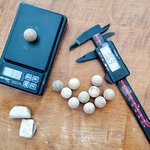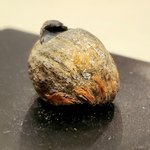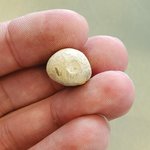Last time I talked about another fantastic British Pattern 1742 musket that we have. I think as a collector of muskets it is important to understand how they function and what happens when they are …
This item is available in full to subscribers.
We have recently launched a new and improved website. To continue reading, you will need to either log into your subscriber account, or purchase a new subscription.
If you are a current print subscriber, you can set up a free website account by clicking here.
Otherwise, click here to view your options for subscribing.
Please log in to continue |
|



Last time I talked about another fantastic British Pattern 1742 musket that we have. I think as a collector of muskets it is important to understand how they function and what happens when they are fired other than the obvious. While working on our bullet strike study of objects and structures hit by musket fire on April 19, 1775, we were seeing some slight variation in the size of British musket ball holes. Was this because of people touching the bullet holes over the years, or was there some variation in the standard British musket ball of the Revolutionary era? I had always heard that a British musket ball was .69 caliber and when spoken about it was with great exactness. But is there a way to check this data and is it even important? In my mind yes to both!
So where would I find original British musket balls from the Revolution? Luckily for me I had helped catalog musket balls found on at least four archaeological digs. I also knew of a collection of dropped, or unfired musket balls found on a British fort site in the Caribbean. This last site was only occupied by British forces for a four- or five-year period. I had also studied the only two objects that survive from the so-called “Boston Massacre” on March 5, 1770, two fired British musket balls! So, I began to enter the find location or catalog numbers, weight, and if dropped, the size using calipers into an Excel spreadsheet. Those that were fired and had some deformation we added a 1-3 scale at the end to describe how deformed they were. As the numbers built up the lack of exactness in size and weight came to light. As of now the ball range from around .67 caliber to .72 caliber with an average of .68.
Granted, some of the differences are pretty small, but they are still differences that can affect the ballistics and make for minor differences in the size of a hole bullet-struck objects. Though I have a pretty good sample I need to record more.
In the fall of 1781 during the Siege of Yorktown, Virginia, some British transports were sunk in the York River so they wouldn’t be captured but also to block the river from French ships entering the area.
Archaeological work was done on some of the ships, and on the Betsy, a transport, a cask of about 10,000 musket balls were found. Getting a sample of some of these may give some really good baseline data for this project. Time to setup a trip to Richmond and visit more lead balls!
As a friendly reminder, metal detecting on National Park Service property is illegal. The abovementioned balls were found during permitted and supervised projects by the National Park Service or state sanctioned projects on various sites.
Comments
No comments on this item Please log in to comment by clicking here